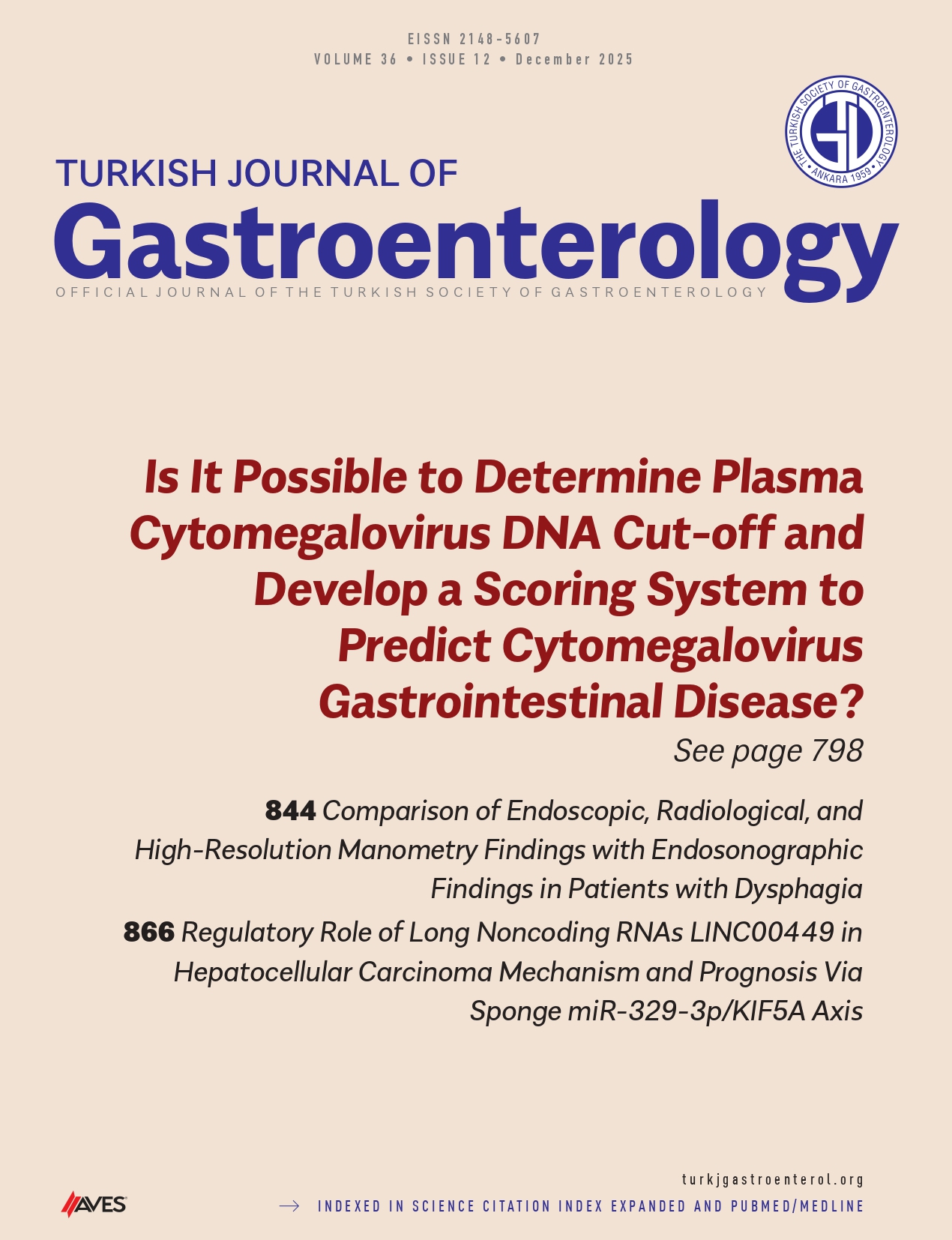Abstract
Background/Aims: In recent years, the role of the gut microbiota has emerged in several diseases. Herein we aimed to determine the fecal microbiota, endotoxin levels, and inflammation markers in patients with nonalcoholic steatohepatitis (NASH) and healthy controls.
Materials and Methods: A total of 46 NASH patients and 38 healthy controls were included. NASH patients were diagnosed according to the steatosis, activity, and fibrosis score/fatty liver inhibition of progression algorithm. 16S rRNA gene-targeted specific primers were used for quantification of certain bacterial groups, and a plasmid library was constructed and sequenced in order to determine dominant Lactobacillus and Bifidobacterium members in patients and controls.
Results: Significantly decreased Akkermansia muciniphila and increased Enterobacteriaceae levels were determined in patients compared to healthy controls even after adjusting for the body mass index (BMI) and age. Patients with ≥F2 fibrosis had significantly higher Enterobacteriaceae levels compared to F0-F1 fibrosis. Serum endotoxin and high-sensitivity C-reactive protein levels were significantly higher in patients group. According to the sequencing results, L. reuteri, which was one of the dominant Lactobacillus species in the patient group, could not be detected in healthy controls. Bifidobacterium infantis was found in the patients’ feces but not in the controls.
Conclusion: We demonstrated a BMI and age-independent association between the presence of NASH and levels of A. muciniphila and Enterobacteriaceae as well as increased endotoxin levels. L. reuteri was abundant in the patient group, suggesting that dominant Lactobacillus species should be considered before probiotic treatments.
Cite this article as: Özkul C, Yalınay M, Karakan T, Yılmaz G. Determination of certain bacterial groups in gut microbiota and endotoxin levels in patients with nonalcoholic steatohepatitis. Turk J Gastroenterol 2017; 28: 361-9




.png)
.png)